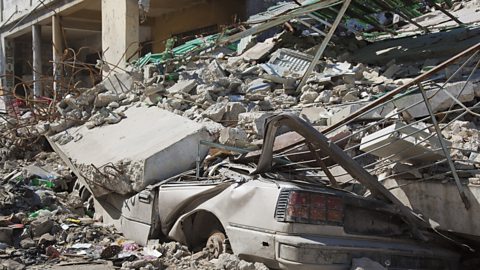Case study – Haiti Earthquake, 2021

Port-au-Prince, Haiti
Haiti is a lower middle-income country in the Caribbean. On 14th August 2021 a 7.2 earthquake struck the country. The plate boundaries around Haiti are complex. The North American Plate lies to the north and the Caribbean Plate to the south. The earthquake took place at a conservative plate boundary, where the Caribbean plate moved eastwards. The focus was only 10 km deep, and the epicentre was 125 km from the capital Port-au-Prince.
Effects
Primary impacts
- More than 2,000 people died and at least 12,000 were injured.
- Hospitals, schools and homes were destroyed.
Secondary impacts
- 332 people were still missing five days after the earthquake.
- Hundreds of landslides took place, which destroyed local ecosystems and habitats.
- Heavy rainfall from Tropical Storm Grace turned the landslides into mud and led to widespread flooding.
- A 3 m high tsunami was recorded around the capital, Port-au-Prince.
Responses
- The United Nations and charities, such as the Red Cross and CAFOD, sent aid. However, the delivery of essential supplies was hampered by heavy rains from Tropical Storm Grace.
- Temporary shelters were provided by the International Organization for Migration. These helped people who had lost their homes.
- The World Food Programme increased their provision of hot meals for school children. This helped to deal with food shortages.
- Temporary hospitals were constructed to help the injured. They also provided routine care, for example, some pregnant women gave birth safely within the temporary facilities.
- The estimated cost of damages from the earthquake is around US$1.6 billion. This amounts to 9.6 per cent of Haiti’s GDP.